European aviation
| < The Wright Brothers | Δ Index | Military Aviation in Britain pre 1909 > |
Although Otto Lillienthal had demonstrated the developed successful man-carrying gliders in Germany, most European aviation was focussed on balloons and airships. This changed after 1903, when Chanute gave a lecture in Paris on the Wrights’ success.
Balloons and airships
As mentioned earlier, the Chinese invented sky lanterns some 2,500 years ago. These were used as toys, released during celebrations or harvest festivals, and as military signalling devices.
There is considerable evidence that Mongol invaders used sky lanterns as signalling devices when they invaded Poland in 1241. This may have been the first sighting of sky lanterns in Europe.
(Joseph Needham’s “Science and Civilisation in China: Volume 4, Physics and Physical Technology, Part 2, Mechanical Engineering; (1965)” covers the prehistory and history of aeronautical engineering in China. You can read the story in this Extract from “Science in China”.)
Although the Chinese had invented the principle of the hot air balloon, the first recorded flight of a man-carrying hot air balloon was in 1781 in France.
Two years later in 1783, the Montgolfier brothers flew over Paris in their hot-air balloon.
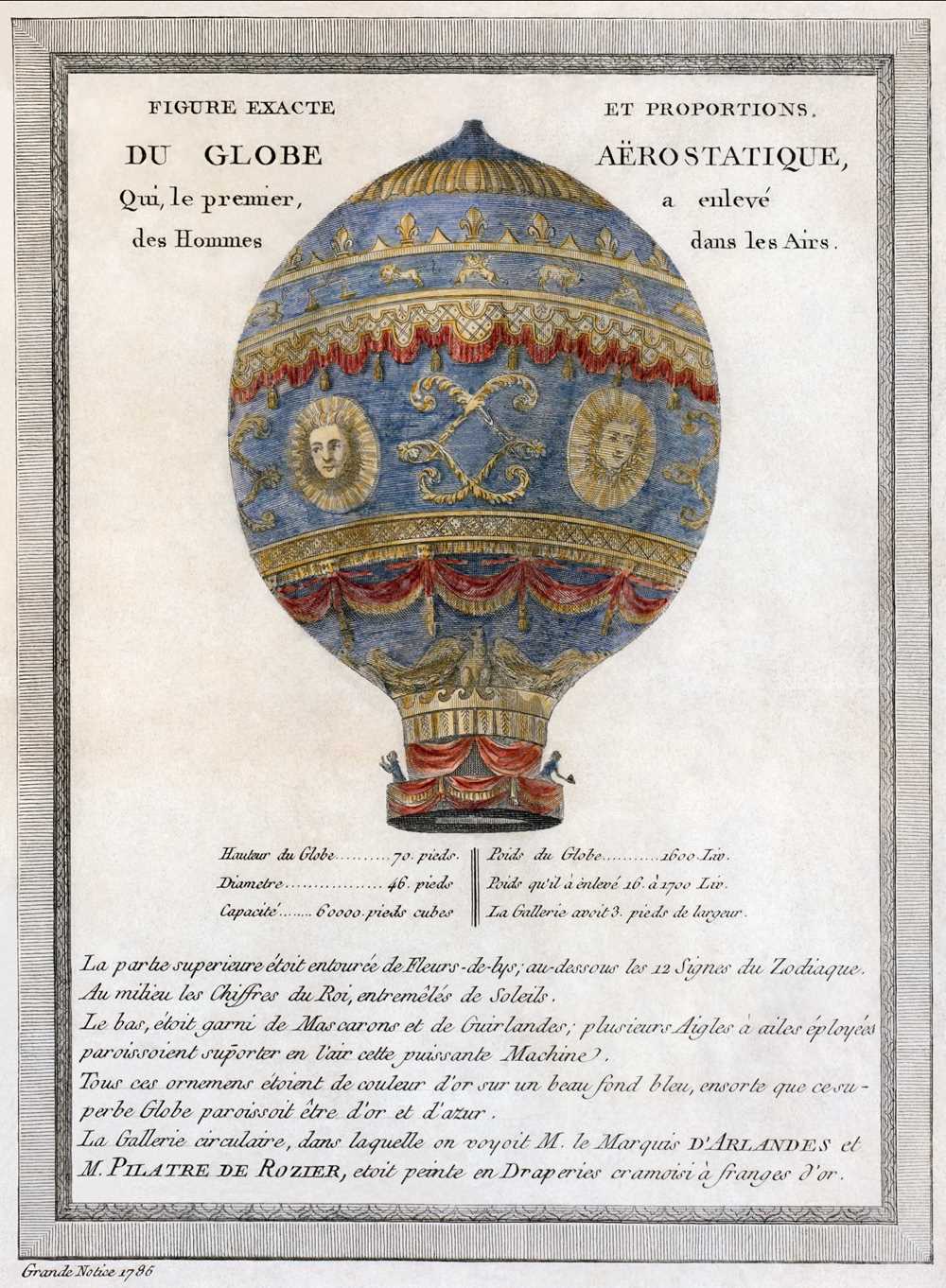
Translation:
Figure and exact proportions of the “Aerostatic Globe”, which was the first to first carry men through the air.
(Engineering data is provided in pre-revolutionary French units – “pied” = foot, “livre” = pound)
Height of the Globe: 70 pieds – Weight of the Globe: 1600 Livres
Diameter: 46 pied – Lifting capacity: between 1600 and 1700 livres
Volume: 60000 pieds cubes – Gallery: 3 pieds wide
These units, while translating literally to “feet” and “pounds”, varied regionally and the version was not specified by the engraver. If Parisian units were used (by far the most likely) then this translates to metric and Imperial measurements as follows:
Height of the globe: 22.7 metres, about 75 ft – Weight of the globe: 780 kg, 1700 lb
Diameter: 14.9m, 49 ft – Lifting capacity: c 780-830 kg, 1700-1800 lb.
Volume: c 2000 cubic metres, 73000 cubic ft. – Gallery: 1 metre, 3 ft
The top portion was surrounded by fleurs-de-lys, with the twelve zodiac signs below. In the middle portion were images of the king’s face, each surrounded by a sun. The bottom section was filled with mascarons and garlands; Several eagle’s wings appear to support this powerful machine in the air. All of this ornamentation was gold on a beautiful blue background, so that that this superb globe appeared to be gold and azure. The circular gallery, in which we see the Marquis D’Arlandes and Mr. Pilatre de Rozier, was covered in crimson draperies with gold fringes.
(The Montgolfier brothers later switched from using hot air to hydrogen gas on the advice of Ami Argand – inventor of the Argand Lamp as used in the North Queensferry Light Tower.)
Although these balloons could fly, the direction of flight was at the mercy of the winds. To control the direction and sail through the air, required some means of propulsion.
In 1852, the French engineer, Henri Giffard, flew the first powered, manned airship. Powered by a steam engine and propeller, the airship flew at about 5-mph and covered 17 miles.
In Germany, Ferdinand, Graf von Zeppelin, a retired German army officer, developed a cigar-shaped airship, which and made its initial flight from a floating hangar on Lake Constance, near Friedrichshafen, Germany, on July 2, 1900. Beneath the 128-metre (420-foot) craft a keel-like structure connected two external cars, each of which contained a 16-horsepower engine geared to two propellers. A sliding weight secured to the keel afforded vertical control by raising or lowering the nose, while rudders were provided for horizontal control.
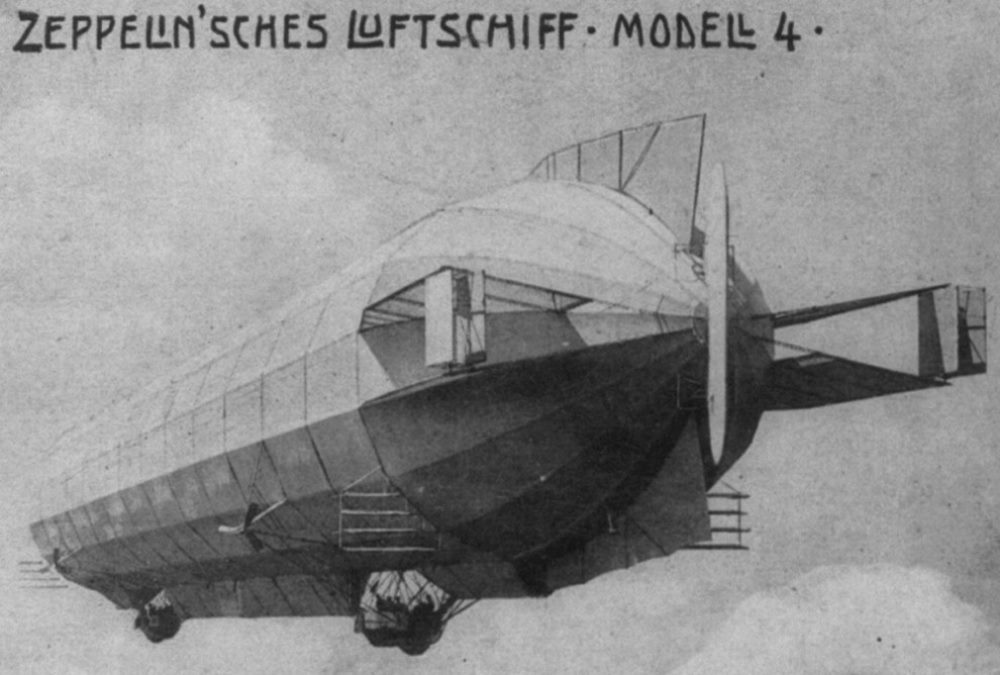
In 1901, Albert Santos Dumont from Brazil was awarded the Deutsch Prize of 125,000 francs for flying a gas airship, from the Aero Club in Paris, around the Eiffel Tower and back again in 30 minutes.
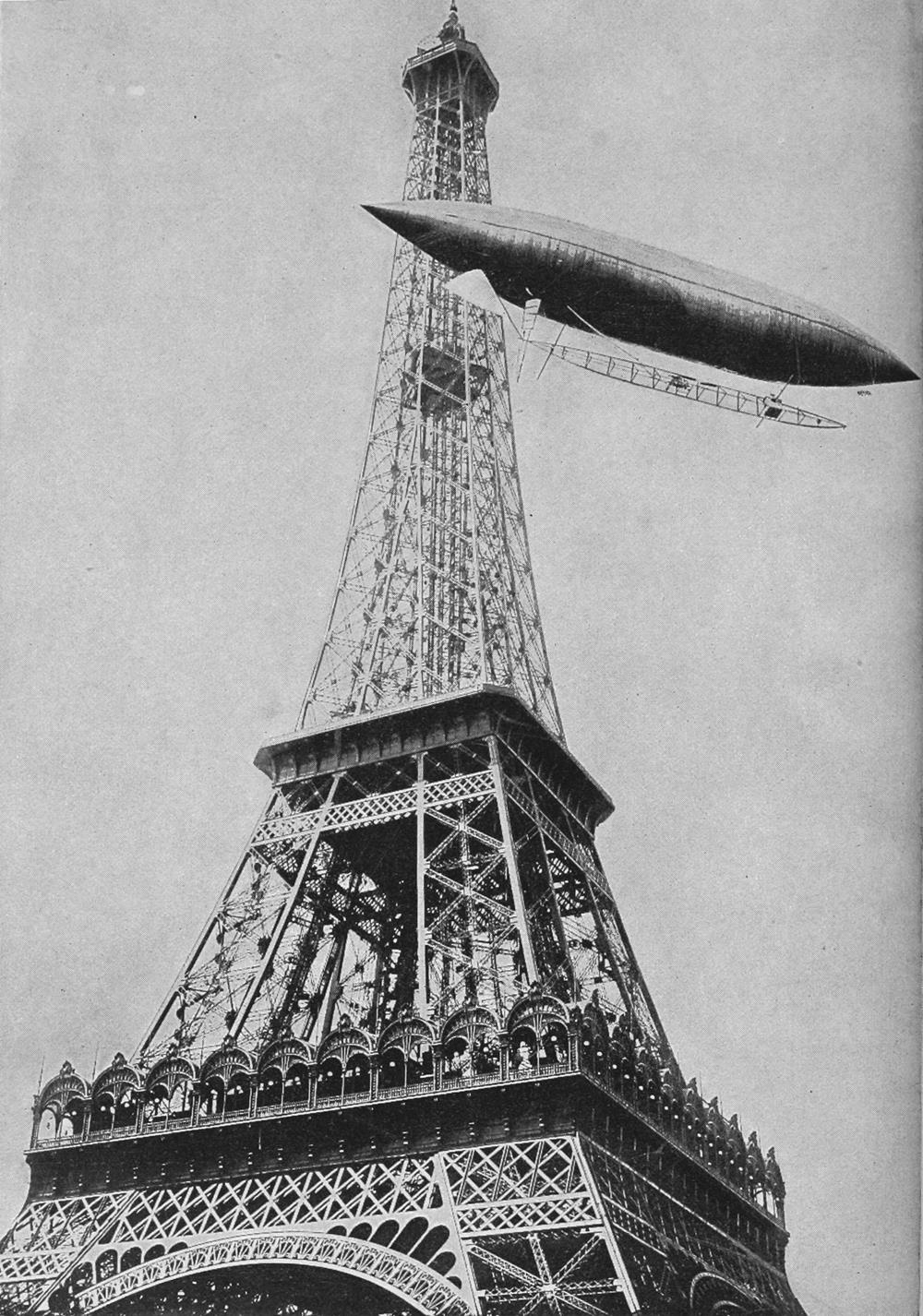
Invention of the wrist watch
In 1904, Santos-Dumont went to his friend, Louis Cartier, and complained about the impracticalities of using pocket watches in flight. This inspired Louis Cartier to create a timepiece his friend could wear on his wrist. Cartier designed a flat wristwatch with a square case and bezel.
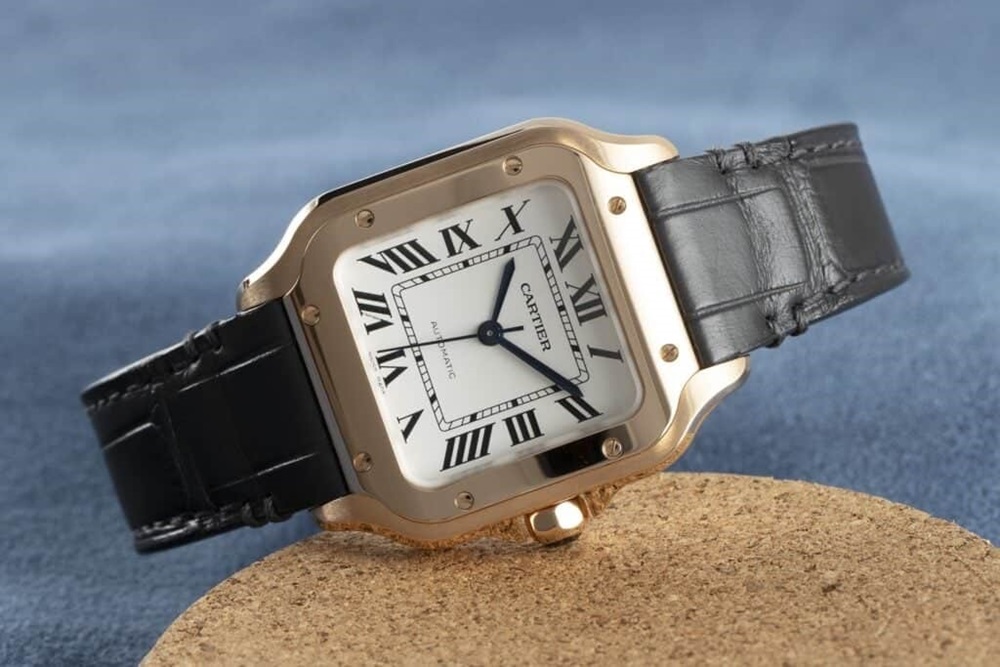
It didn’t take long for other customers to show an interest, and the Cartier Santos-Dumont became the first mass-produced men’s wristwatch and the world’s first pilot’s watch.
European aeroplanes
After Chanute’s lecture in Paris in 1903, several Wright look-alikes began to appear and Louis Blériot and Gabriel Voisin set up the first aircraft works at Billancourt in Brittany, which produced various unsuccessful designs.
In November 1906 France was enthralled by the Brazilian, Santos Dumont, in an extraordinary machine.
His aeroplane, known as 14bis because he tested it by dangling it under his 14th Balloon, looked rather like two box-kites held together with an engine. This machine, with lots of stabilising dihedral and an ineffective elevator control, got airborne for 21 seconds and flew 722 ft. This was to give renewed strength to the heavier-than-air lobby and the flight was recognised as having been the first flight in Europe.
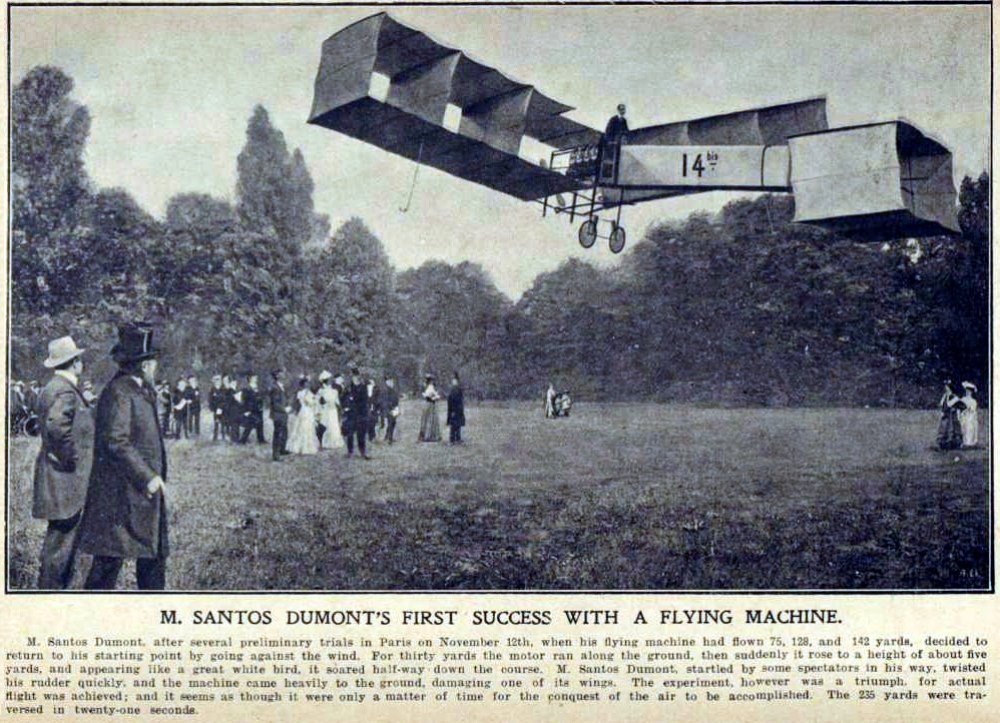
M. Santos Dumont after several preliminary trials in Paris on November 12th, when his flying machine had flown 75, 128 and 142 yards, decided to return to his starting point against the wind. For thirty yards the motor ran along the ground, then suddenly it rose to a height of about five yards and appearing like a great white bird it soared half-way down the course. M. Santos Dumont, startled by some spectators on his way, twisted his rudder quickly, and the machine came heavily to the ground, damaging one of its wings. The experiment, however was a triumph, for actual flight was achieved; and it seems as though it were only a matter of time for the conquest of the air to be accomplished. The 235 yards were traversed in twenty-one seconds.
On 13 January 1908: Henry Farman flew a circular one kilometer course at Issy-les-Moulineaux, France, in 1 minute, 28 seconds to win the Grand Prix de l’aviation, a prize of 50,000 francs, which had been offered by Henri Deutsch de la Meurthe in 1904.
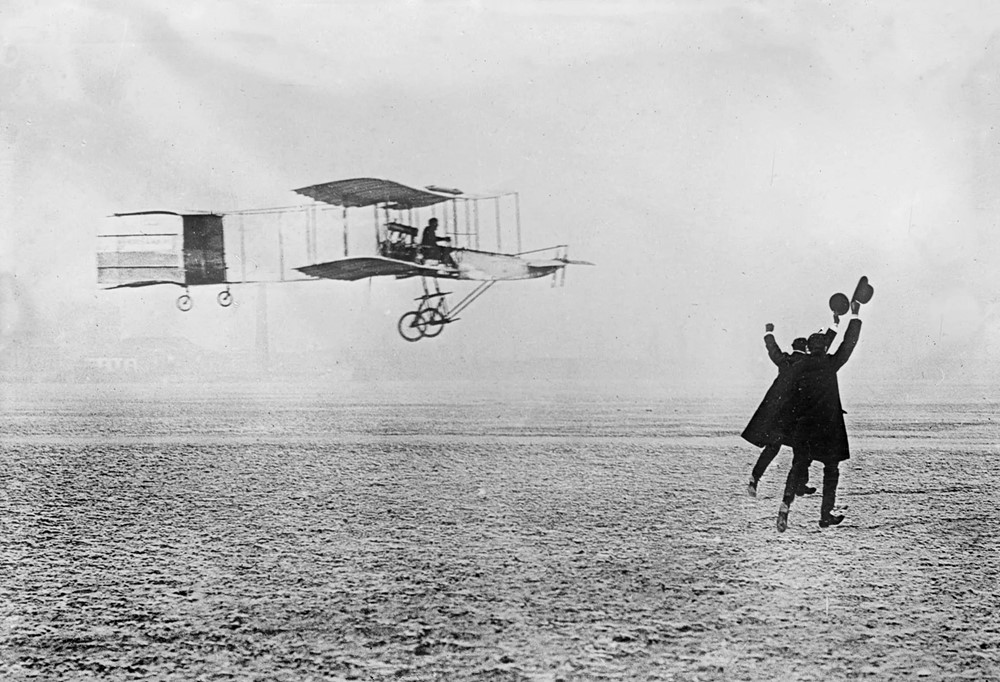 Henry Farman and the Voisin-Farman I win the Grand Prix de l’aviation, for flying a circular course of more than one kilometer, 13 January 1908.
Henry Farman and the Voisin-Farman I win the Grand Prix de l’aviation, for flying a circular course of more than one kilometer, 13 January 1908.
What was happening across the Channel in Britain?
| < The Wright Brothers | Δ Index | Military Aviation in Britain pre 1909 > |